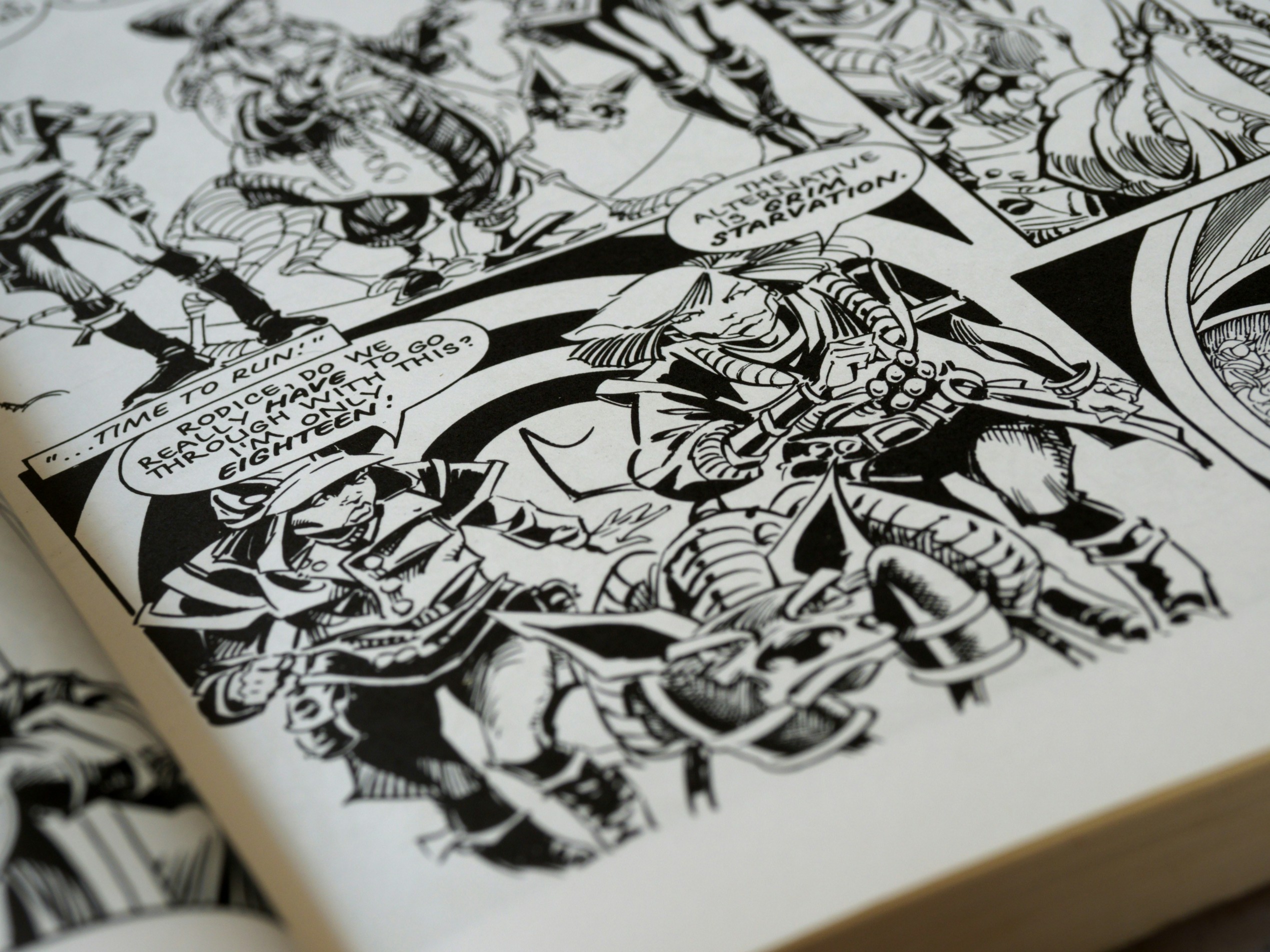Unveiling Nikke Tier Lists in Anime Complete Guide

What is a Nikke Tier List?
A Nikke tier list is a structured ranking system commonly used within the anime community to categorize characters, series, or elements based on specific criteria. This system helps fans organize their preferences and opinions regarding different aspects of anime content.
Nikke tier lists are typically created by individuals or groups, including media outlets like Nikkei, anime forums, or social media communities. They can cover a huge variety of subjects, from rating the energy of characters in a particular anime collection to listing the quality anime series of all time.
Importance of Nikke Tier Lists in the Anime Community
Nikke tier lists hold significant importance within the anime community for several reasons. Firstly, they provide a platform for fanatics to explicit their views and preferences overtly. This fosters engagement and discussion among anime lovers, developing a colorful community of shared pastimes and reviews.
Additionally, Nikke tier lists serve as valuable resources for newcomers to the anime scene. They offer insights into popular series, memorable characters, and thematic elements, helping new fans navigate the vast world of anime content more effectively.
Factors Influencing Nikke Tier Lists
Criteria for Ranking
The criteria used for ranking in Nikke tier lists vary depending on the specific focus of the list. Common criteria include:
1. Power Levels and Abilities: Rankings based on characters’ strength, magical abilities, combat prowess, and strategic skills.
2. Character Development: Evaluation of characters’ growth, complexity, and impact on the story.
3. Storyline Relevance: Importance of characters or series in advancing the plot and narrative themes.
4. Fan Popularity: Influence of fan preferences, memes, and cultural significance on rankings.
5. Emotional Impact: How characters or series evoke emotions and resonate with audiences.
Each criterion contributes to the overall ranking and can lead to diverse interpretations and discussions among fans.
Subjectivity vs. Objectivity in Rankings
Nikke tier lists often blur the line between subjective opinions and objective analysis. While a few list purpose for objectivity by means of focusing on quantifiable components like electricity ranges or story relevance, others contain subjective factors together with non-public favorites, emotional connections to characters, or cultural importance.
This mixture of subjectivity and objectivity affords depth to tier lists, reflecting the various views and studies of anime fans. It also encourages debates and discussions about the criteria used in rankings and the impact of personal biases on perceptions of anime content.
Impact of Popularity and Fan Preferences
Popularity and fan preferences play a significant role in shaping Nikke tier lists. Characters or series with a large fan following often receive higher rankings, reflecting their widespread appeal and cultural significance within the anime community.
However, popularity can also lead to biases in rankings, as fan favorites may overshadow lesser-known but equally deserving characters or series. Balancing popularity with other criteria is essential to creating comprehensive and fair tier lists that represent the diversity of anime content.
Popular Nikke Tier Lists in Anime
Top Anime Series Tier List
The top anime series tier listing is a compilation of the most acclaimed and favored anime collections in the network. These ratings are primarily based on numerous factors, which include:
1. Overall Quality: Evaluation of animation quality, art style, soundtracks, and voice acting.
2. Storytelling: Assessment of plot complexity, pacing, character development, and thematic depth.
3. Impact on the Industry: Influence of the series on anime trends, genres, and cultural impact.
4. Fan Reception: Consideration of fan reviews, ratings, and longevity of popularity.
Popular titles frequently observed on this tier list include classics like “Naruto,” “Dragon Ball Z,” “One Piece,” along current hits like “Attack on Titan,” “My Hero Academia,” and “Demon Slayer: Kimetsu no Yaiba.”
Favorite Character Tier List
The favorite character tier list allows fans to showcase their personal preferences and emotional connections to anime characters. Factors influencing rankings include:
1. Character Development: Assessment of growth, complexity, and relatability of characters.
2. Memorable Moments: Recognition of iconic scenes, quotes, and character arcs.
3. Fan Attachments: Emotional connections, fan art, fanfiction, and cosplay representations.
Popular characters frequently featured in this tier listing consist of Naruto Uzumaki from “Naruto,” Goku from “Dragon Ball Z,” Luffy from “One Piece,” and Eren Yeager from “Attack on Titan,” among others.
Most Powerful Characters Tier List
The most powerful characters tier listing specializes in ranking characters based totally on their combat competencies, magical powers, intelligence, and strategic prowess. Criteria for rankings include:
1. Combat Skills: Mastery of martial arts, weaponry, and unique abilities.
2. Magical Abilities: Control over elemental powers, spells, and supernatural abilities.
3. Intelligence and Strategy: Tactical thinking, problem-solving skills, and strategic planning.
4. Feats and Achievements: Notable accomplishments and victories in battles or challenges.
Characters often featured on this tier listing encompass Goku from “Dragon Ball Z,” Saitama from “One Punch Man,” Levi Ackerman from “Attack on Titan,” and Ichigo Kurosaki from “Bleach.”
How to Create Your Own Nikke Tier List
Selecting Criteria and Parameters
When creating your Nikke tier list, it’s crucial to define clear criteria and parameters for ranking. Consider the following steps:
1. Define the Focus: Determine whether your tier list will focus on anime series, characters, abilities, or other elements.
2. Choose Ranking Criteria: Select specific criteria such as power levels, character development, fan popularity, or emotional impact.
3. Set Tier Categories: Create tier categories (e.g., S-tier, A-tier, B-tier, etc.) to classify rankings based on criteria.
4. Consider Diversity: Ensure diversity in rankings by including a range of characters, series, or elements across different genres and themes.
Research and Analysis
Thorough research and analysis are essential for creating an informed Nikke tier list. Follow these steps:
1. Watch/Read Anime: Watch anime episodes or read manga to understand characters, storylines, and abilities.
2. Consult Reliable Sources: Refer to official data, guidebooks, wikis, and fan communities for accurate information.
3. Analyze Character Traits: Evaluate characters based on their strengths, weaknesses, backstories, and contributions to the narrative.
4. Compare Rankings: Compare your rankings with existing tier lists to validate your assessments and identify any discrepancies.
Presenting and Sharing Your List
Present your Nikke tier list effectively to engage your audience and encourage discussions. Consider these strategies:
1. Visual Presentation: Use graphics, charts, and visuals to showcase rankings and tier categories.
2. Explanatory Notes: Provide explanations for each ranking, highlighting key factors that influenced your decisions.
3. Invite Feedback: Encourage feedback and discussions from fellow fans by sharing your list on social media, forums, or anime communities.
4. Update Regularly: Update your tier list periodically to reflect new releases, character developments, or changes in rankings based on community feedback.
Controversies and Debates in Nikke Tier Lists
Discrepancies in Rankings
Discrepancies in Nikke tier listing rankings regularly cause debates and controversies inside the anime network. Factors contributing to those discrepancies encompass:
1. Differing Criteria: Varied criteria used by different creators or sources can result in contrasting rankings.
2. Personal Biases: Personal preferences, interpretations, and biases may influence individual rankings.
3. Changing Perceptions: Evolving storylines, character developments, or new information can alter rankings over time.
4. Community Consensus: Community feedback and discussions can influence rankings and perceptions of anime content.
Fan Reactions and Feedback
Nikke tier lists often elicit strong reactions and feedback from fans. Common responses include:
1. Agreement: Fans agree with rankings based on their own assessments and experiences.
2. Disagreement: Disputes over rankings due to differing opinions, interpretations, or favorite characters/series.
3. Critique and Analysis: Constructive criticism and analytical discussions regarding rankings, criteria, and overall presentation.
4. Creativity: Fans may create their tier lists in response to existing rankings, adding to the diversity of perspectives within the community.
Evolution of Tier Lists Over Time
Nikke tier lists evolve continuously based on new releases, character developments, and changing community preferences. Factors contributing to this evolution include:
1. New Releases: Introduction of new anime series, characters, or story arcs that impact rankings.
2. Character Developments: Significant changes in character traits, abilities, or storylines influencing their rankings.
3. Fan Feedback: Community feedback and discussions leading to revisions or updates in tier lists.
4. Cultural Shifts: Changes in anime trends, genres, or thematic preferences shaping rankings and perceptions.
Conclusion: The Role of Nikke Tier Lists in Anime Culture
Nikke tier lists play a pivotal role in shaping and enriching the anime culture, contributing to the following aspects:
1. Community Engagement: Tier lists foster engagement and discussions inside the anime community, permitting fans to share their evaluations, insights, and choices.
2. Diversity of Perspectives: Nikke tier lists showcase the diverse views and tastes of anime enthusiasts, highlighting a huge variety of characters, collections, and issues.
3. Celebration of Favorites: Fans use tier lists to rejoice in their preferred characters, collections, moments, and factors of anime that resonate with them emotionally or intellectually.
4. Analytical Discussions: Tier lists encourage analytical discussions about man or woman developments, storylines, thematic factors, and the general first-class anime content material.
5. Evolution of Rankings: Tier lists evolve through the years, reflecting changes in fandom possibilities, cultural influences, new releases, and ongoing traits in the anime industry.
While Nikke tier lists may additionally spark debates, controversies, and differing opinions, they in the end contribute to the vibrant and dynamic nature of anime tradition. They serve as precious gear for fans to explore, respect, and engage with the wealthy tapestry of anime storytelling, characters, and experiences.
Read more about Ilimecomix: Bridging Traditional Artistry and Digital Innovation in Comics.














